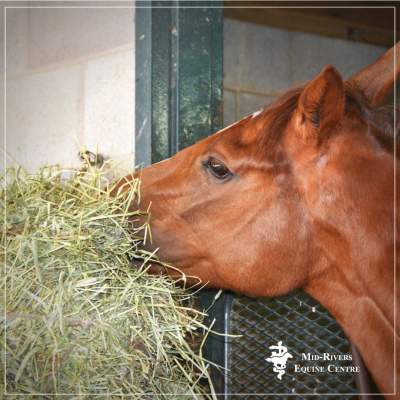 Hay is valuable for its protein, mineral, and vitamin content. Vitamin A, however, loses 50%- 80% of its value in the first 24 hours after cutting, and in dry storage conditions will lose approximately 7% -10% of its value every month. Specifically, the carotenoids in Vitamin A are lost at this rate. Hay contains large amounts of Vitamin A, which functions as a provitamin, supporting eye health, the immune system, reproductive health, and a robust antioxidant. Six-months after cutting, hay may have as little as 10% of its original carotenoid content. The liver can store excess Vitamin A for up to six months, making a required supplement unlikely.
Hay is valuable for its protein, mineral, and vitamin content. Vitamin A, however, loses 50%- 80% of its value in the first 24 hours after cutting, and in dry storage conditions will lose approximately 7% -10% of its value every month. Specifically, the carotenoids in Vitamin A are lost at this rate. Hay contains large amounts of Vitamin A, which functions as a provitamin, supporting eye health, the immune system, reproductive health, and a robust antioxidant. Six-months after cutting, hay may have as little as 10% of its original carotenoid content. The liver can store excess Vitamin A for up to six months, making a required supplement unlikely.
Hay also contains Vitamin E. Vitamin E suffers losses at 54% -73% within three months of curing. Vitamin E is critical in maintaining healthy muscle and nerve function and is a robust antioxidant supporting the immune system. Unlike vitamin A, a horse does not store vitamin E, and it must be made available in the diet. A supplement may be in order. We recommend reviewing a horse’s diet with the primary care veterinarian during spring and fall well-care visits to assess any supplement needs.
Conversely, the protein and mineral contents in hay are constant. Forage loses about 5% of its protein and mineral value over the first two months, and then loss levels off, making it an excellent long-term source of digestible energy.